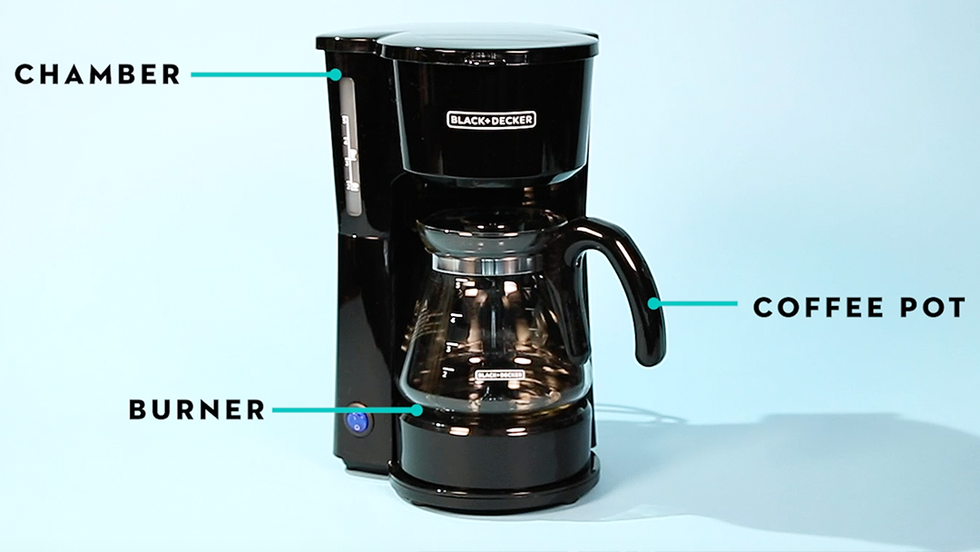If a good cup of coffee is your morning beverage of choice, it’s not only important to have a great coffee maker, but it’s just as important to deep-clean it regularly, especially if you use it daily. Without proper cleaning, coffee oils can build up in the carafe, the basket and elsewhere and cause your brew to taste bitter. Or, let it go long enough and there could be yeast and mold hiding in the reservoir, according to a 2011 study by NSF International. Though these nasties likely won’t seriously impact your health, just the thought of them lurking in your coffee maker is unpleasant, to say the least. Instituting a regular coffee maker cleaning ritual is easy to do and provides a big payoff when it comes to taste. Follow the steps below to clean a standard drip coffee maker.
Wondering how to deep-clean a K-Cup machine? We’ve got you covered: Follow our guide to cleaning Keurig coffee makers. And don’t forget about cleaning your travel mugs too!
How to Clean a Coffee Maker
Cleaning this countertop appliance on a regular basis actually takes very little effort. Carolyn Forté, executive director of the Good Housekeeping Institute Home Care & Cleaning Lab, says with a little bit of water, soap and vinegar, you’ll be good to go. Forté also mentioned that it’s best to check the cleaning instructions from your coffee maker’s manufacturer, as all machines are slightly different. Follow its guidelines or these simple steps:
What You’ll Need
Step 1: Wash removable parts with dish soap after every use.
“This is important because it helps remove coffee drips, grinds and the oils that are left behind,” Forté says. “You can hand-wash the pieces at the sink in warm, soapy water, but often the parts are dishwasher safe, making the task even easier. And don’t forget to wipe down the outside and the warming plate, where spills can burn on.” She also recommends leaving the reservoir’s lid open so it can dry out completely after each use.
Step 2: Decalcify your machine with vinegar every three months.
Over time, hard water minerals can build up in your machine’s inner workings, and you may notice that your pot of coffee takes longer to brew. To get things flowing, you need to cleanse and decalcify the machine. Most coffee makers have an indicator light that illuminates when it’s in need of a deep cleaning. Forté recommends not waiting for the light to go on. By then, it could take several cleaning cycles to clear it. Instead, set a reminder to do it at least every three months, or four times per year. Of course, there’s no harm in doing it more often. Here’s how to decalcify a drip coffee maker:
- Remove the charcoal water filter from the reservoir, if there is one.
- Fill the reservoir with equal parts white vinegar and water.
- Place a paper filter into the machine’s empty basket.
- Position the pot in place, and “brew” the solution until the “add water” light illuminates.
- Pour out the full pot of vinegar and water, and let the machine sit for 30 to 60 minutes.
- Empty, wash, rinse and replace the water reservoir, and fill it with clear water. If not removable, simply fill it with clear water.
- Put in a new paper filter and brew a full pot of clean water until the “add water” light illuminates again.
- If necessary, add more water and brew another cup or two until no trace or scent of vinegar remains.
- Replace the charcoal filter with a new one you’ve soaked in water and rinsed, per directions.
Step 3: Make your carafe sparkle again using rice.
You should always wash your carafe after each use, but if it’s looking dingy over time, fill it with warm, sudsy water and a little uncooked rice. Swirl the mixture to loosen any gunk. Use a scrub sponge dipped in a little baking soda to remove any remaining debris, and rinse well.
Senior Editor
Lauren is a senior editor at Hearst. She was previously the senior editor at WomansDay.com and the home editor at GoodHousekeeping.com and HouseBeautiful.com. Her book club, ramen, and jean jackets are a few of her favorite things.

